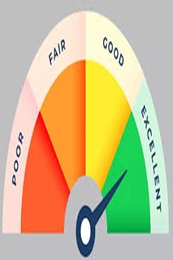What is an Encumbrance Certificate and Why Do You Need It?
April 15, 2025

Are you planning to buy or sell a property? Or maybe you're applying for a loan against your property? In any of these scenarios, obtaining an Encumbrance Certificate (EC) is essential. An EC is a legal document that confirms the ownership status of a property and ensures no outstanding dues or liabilities are associated with it. Whether you're a first-time buyer or an experienced investor, understanding the significance of an EC is crucial to protect yourself from potential risks and ensure a smooth transaction process.
In this article, we will explore the meaning of an encumbrance certificate, its importance in property transactions in legal terms, how to obtain it online, the required documents, and why it plays a vital role in financial decision-making. Let's dive in!
What is an Encumbrance Certificate?
An Encumbrance Certificate, also known as an EC for property certificate, is an official document that verifies the ownership status of a property. It provides information about any mortgages, liens, or legal dues associated with the property. The certificate serves as concrete evidence that the property is free from any financial or legal encumbrances. Obtaining an EC is essential for property buyers as it ensures transparency and protects them from inheriting any liabilities.
Importance of an Encumbrance Certificate
- Assurance of Clear Title: An EC assures property buyers that the previous owners have not taken any loans against the property. It ensures no pending financial obligations or legal disputes are associated with the property.
- Eligibility for Loans: Individuals seeking a loan against property or applying for a home loan need to furnish an EC as proof of ownership. Lenders use this document to evaluate the property's value and determine the loan amount and interest rates.
- Property Mutation: The EC is required for mutation, which involves updating the ownership records with the local authorities. It also helps transfer the property's title from one owner to another.
- Updated Tax Records: In case of unpaid land or property taxes for more than three years, the EC is furnished to the village or panchayat officer to update the tax records.
- Withdrawal from PF Account: If you intend to withdraw money from your Provident Fund (PF) account, an EC may be required as proof of collateral if you choose to pledge your property.
How to Obtain an Encumbrance Certificate Online
- Visit the Government Portal: Go to the official property registration portal of your state.
- Register or Log In: Create an account or log in with your credentials.
- Fill Out Form 22: Provide the necessary details, including the buyer's and seller's information, property details, and the specified period for which the EC is required.
- Attach Required Documents: Upload the necessary documents, such as property papers and identification proof.
- Pay the Processing Fee: Complete the online payment for processing the EC. This fee is paid as a processing charge to procure the required details in the form of an EC.
- Verification and Issuance: The sub-registrar's office reviews your application and documents. If there are no encumbrances, Form 16 (EC with no encumbrances) will be issued; otherwise, Form 15 (EC with encumbrances) will be issued.
- Download the EC: Once ready, download and keep a copy of the EC for your records.
Documents Required to Obtain an Encumbrance Certificate
- Property Registration Document: The document that proves ownership of the property.
- Possession Deed Details: Details of possession deeds related to the property.
- Title Deed: The document that confirms ownership rights over the property.
- Gift Deed or Sale Deed: If any gift or sale deed has been executed previously, a copy of the deed must be provided.
- Reference Letter of Authority: A reference letter from the authorised person granting permission to obtain the EC.
- Address Proof: Any document that serves as proof of address, such as a utility bill or Aadhaar card.
- Duly Filled Application: The application form for obtaining an EC, which can be obtained from the sub-registrar's office or downloaded from the official website.
Benefits of an Encumbrance Certificate
An Encumbrance Certificate offers several benefits for buyers, sellers, and current owners:
1. Buyer Benefits
- Evaluating Property Obligations: An EC helps buyers evaluate prospective properties for any financial obligations and monetary dues. It ensures transparency and protects buyers from unforeseen liabilities.
- Additional Check for Home Loan Eligibility: Buyers can use an EC as an additional check to validate the seller's claims regarding pending loans on the property.
2. Seller Benefits
- Quick Property Sale: A property with a clear EC attracts buyers easily and expedites the selling process.
- Validation of Property Ownership: An EC provides strong validation for property ownership, ensuring smooth transactions.
3. Current Owner Benefits
- Verification of Collateral: An EC serves as proof of ownership and helps current owners verify collateral when applying for a loan against their property.
Final Thoughts
In conclusion, an Encumbrance Certificate is one of the crucial property documents in property transactions that ensures transparency and protects both buyers and sellers. By obtaining an EC, you can verify the ownership status of a property, assess any outstanding liabilities, and make informed financial decisions.
Buying a house has never been this easy! Avail Ujjivan SFB’s wide range of affordable home loan products and enjoy a hassle-free loan journey. From house purchase loan to plot loans and home improvement loans, we have it all! Alternatively, you can browse through Ujjivan SFB product suite - our wide range of financial products are designed to make your financial life better.
FAQs
1. Is there a specific timeline to obtain the Encumbrance Certificate?
The timeline for obtaining an Encumbrance Certificate varies depending on the processing speed of the sub-registrar's office. Usually, it takes around 15-20 days.
2. Why is an Encumbrance Certificate important?
An Encumbrance Certificate is important as it ensures that a property is free from any obligations, dues, taxes, or other charges. It provides clarity and transparency in property transactions.
3 How can I download an Encumbrance Statement for my property?
In many states, you can download an Encumbrance Statement online through the state government portals. This allows you to access a soft copy of the certificate for your records.
4. Can I obtain an Encumbrance Certificate manually if the online option is not available?
Yes, if the online option is not available in your state, you can apply for an Encumbrance Certificate manually by visiting the sub-registrar's office and following the required procedure.
5. Can an Encumbrance Certificate be used as proof of ownership?
Yes, an Encumbrance Certificate serves as proof of ownership, as it verifies that there are no encumbrances or legal dues associated with the property.
6. Can I obtain an Encumbrance Certificate for ancestral property?
Yes, you can obtain an Encumbrance Certificate for ancestral property by providing the necessary documents, such as the property registration document, possession deed, and other relevant ownership proofs.
Latest Blogs

Telangana Housing Board & KPHB Colony: A Guide to Affordable Urban Housing in Hyderabad
March 14, 2025
As Telangana continues its rapid urbanisation journey, two key housing entities—Telangana Housing Board (THB) and Kukatpally Housing Board Colony (KPHB)—have played critical roles in shaping the state's real estate ecosystem.

Does Checking CIBIL Score Frequently Lower Your Credit Points?
April 07, 2025
Imagine you're planning to apply for a home loan, a credit card, or even a car loan. Naturally, you want to ensure your CIBIL score is in good shape before proceeding.

Explained: Can NRIs Buy an Agricultural Land in India?
April 03, 2025
Real estate investment is often a top priority for Non-Resident Indians (NRIs) looking to retain strong financial ties to India.

How to Improve Your CIBIL Score from 600 to 750: A Step-by-Step Guide
April 02, 2025
Your CIBIL score is like your financial reputation—banks check it before approving loans or credit cards. If your score is hovering around 600, you might face difficulties in securing credit or may get loans with higher interest rates.

What Happens When You Leave Your Savings Account Unused?
April 01, 2025
Imagine waking up one day to find that your hard-earned money is locked away and inaccessible. Sounds stressful, right? This is precisely what happens when you leave your Savings Account inactive for too long.



